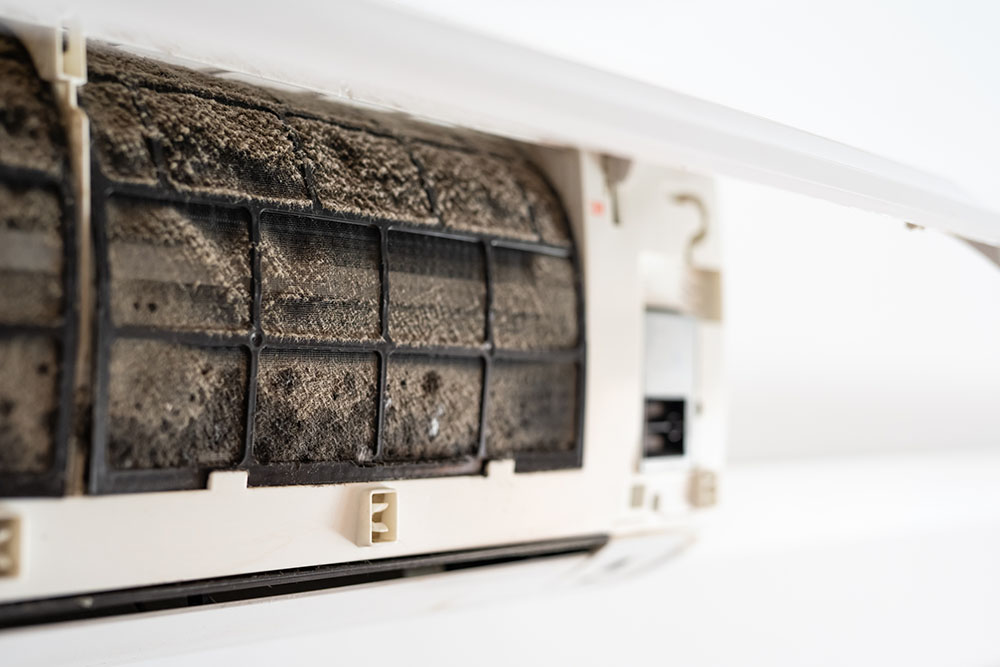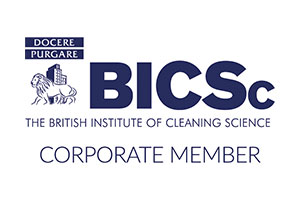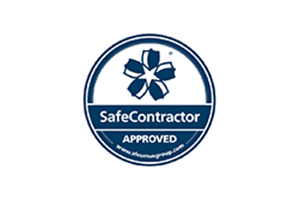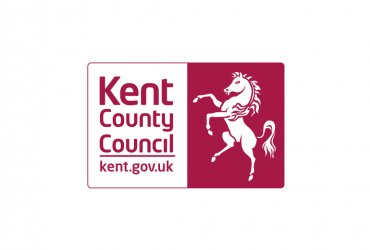How to Keep Mould Out of Your HVAC System

CONTENTS
- Understanding the threat of mould in HVAC systems
- Health problems caused by mould
- Recognising signs of mould in your HVAC system
- Preventive measures against mould growth
- Professional mould remediation in HVAC systems
- Long-term strategies for mould-free environments
- Frequently asked questions
- Get in touch
Experiencing symptoms like sneezing more often or noticing a musty smell that seems to linger could be mould lurking within your heating, ventilation and air conditioning (HVAC) system. Mould is a fungal growth that can sneak into these systems, damaging the electronics and spreading spores.
ICE Cleaning is leading the way for mould remediation in the UK, providing 24-hour care, all year round. We can effectively locate the source of mould in your HVAC systems, eliminating it from the surfaces and providing your home with clean air again.
Read on to learn more about how mould sneaks into your heating and cooling systems and how it can be tackled effectively.
Understanding the threat of mould in HVAC systems
Mould is a fungus that flourishes in damp environments. It can infiltrate your HVAC system and become a serious problem if not dealt with promptly. The threat from mould comes from its spores, which travel through the air we breathe when an infested HVAC system operates.
In addition, persistent mould growth could damage your HVAC system over time by clogging filters and corroding metal components, leading to inefficient operation or even failure of the unit.
It is important to remain vigilant for signs of mould growth to prevent these problems, such as unusual odours or increased allergy symptoms among occupants.
Health problems caused by mould
Exposure to mould spores from HVAC systems can cause various health problems. The most common are allergic reactions, which include sneezing, skin rash and irritated eyes or throat.
However, it could cause more severe problems, like respiratory illnesses or hypersensitivity pneumonitis - a lung inflammation caused by breathing in allergens like mould spores.
The impact could worsen for those individuals who have pre-existing respiratory illnesses. Therefore, ensuring you are not breathing in harmful mould spores is vital for maintaining good health.
Exposure to mould spores can significantly decrease indoor air quality. This usually occurs when the HVAC system becomes a breeding ground for mould due to high humidity and poor ventilation.
Indoor air pollution caused by mould can trigger allergies, cause respiratory issues, and negatively impact overall comfort levels within your home or workplace. Prolonged exposure may even result in severe health complications such as asthma in children.
To ensure healthier indoor air quality, you must have your HVAC systems checked regularly by professionals for any signs of mould growth.
Recognising signs of mould in your HVAC system
A mould presence within an HVAC system can often be hard to spot, but some clear signs might hint at a lurking problem. An unusual odour is one common sign - if your system emits a musty or damp smell, mould has likely found its way inside.
Visible mould growth around the ducts, vents and other areas of the system also points towards infestation. However, not all types are easily noticeable and may grow in different colours depending on the environment and strain type.
Experiencing health issues like frequent allergies or respiratory problems may indicate poor indoor air quality due to mould contamination. If you notice these signs, seeking professional help from specialists is crucial for effective mitigation.
Preventive measures against mould growth
It is important to keep the environment clean and dry to prevent mould growth in HVAC systems. Regular inspections and cleaning can help spot early signs of mould and stop it from spreading.
Proper ventilation reduces moisture levels, making conditions less favourable for mould. Insulating ducts can also prevent condensation that might encourage mould growth.
Besides this, using high-efficiency air filters, changing them regularly, and having routine professional maintenance on the system are steps towards maintaining a healthy indoor environment free of harmful microbes like mould spores.
Professional mould remediation in HVAC systems
Mould can be dangerous to your HVAC system. Mould is an issue that is detrimental to the performance of your HVAC system but also carries health risks. To tackle this problem directly, you need professional mould remediation services.
Mould remediation is a process that involves identifying and fixing the source of moisture promoting mould growth. It also includes cleaning and sanitising areas affected by mould using specialised equipment and techniques.
Mould experts have vast experience dealing with stubborn mould problems in HVAC systems. Skilled technicians use industry-leading methods to ensure the eradication of spores, ensuring optimal air quality for you and your family.
Long-term strategies for mould-free environments
Maintaining a mould-free HVAC system is crucial to ensuring high indoor air quality. To do this, you must understand the conditions that promote mould growth and actively work to control them.
The first step is regular maintenance. Cleaning filters and ducts can help prevent the build-up of dust and moisture, contributing heavily to mould growth in HVAC systems.
Besides cleaning, maintaining an optimal humidity level within your property can also hinder mould development. It is advisable to keep relative humidity levels between 30% - 50%, as anything more may create favourable conditions for spores.
Lastly, professional inspections like damp surveys are vital. Experts can identify potential problem areas early on and advise on further preventive measures.
Frequently asked questions
Is it normal to have mould in your HVAC system?
Mould in your HVAC system is not normal and it often means there are moisture issues that need addressing.
How do I get rid of mould in my HVAC system?
You should contact professional help for mould in your HVAC system. Regular maintenance can prevent future growth.
Which type of mould is commonly found in interior HVAC systems?
The most common growth is Cladosporium, a black or green mould often found growing on damp surfaces inside homes.
What does HVAC mould look like?
HVAC mould typically looks like dark spots or patches on ductwork, filters or other components; it might also give off a musty smell.
Get in touch
At ICE Cleaning, we offer around-the-clock protection throughout the year against mould. Our mould cleaning services allow us to identify mould within your heating and cooling systems, remove it, and leave your property with a lifetime guarantee*.
To learn more about our mould remediation methods, get in touch with our friendly team at 0208 066 0360 or enquiries@icecleaning.co.uk. We can be on-site within a few hours of your first call, delivering excellent cleaning solutions and restoring your property.
*subject to advisories

Speak with me today,
I’m here to help
By asking you a few questions either via phone or email I can immediately provide a realistic estimation of the cost.
You’re in good company. We’ve cleaned for the following commercial clients… View all

Why choose us?
- Cater to a wide variety of cleaning situations
- Nationwide coverage, available 24/7
- Cater to commercial and domestic clients
- Free survey provided prior to quotation
- Emergency response team
- Offer a bespoke service designed to suit all your needs
- All technicians hold professional health and safety qualifications, including BICSc, IOSH, Dewpoint Professional & Safe Contractor
We’re fully accredited
We place best practise, professional expertise and health and safety at the core of our business. We’re fully compliant with all legal obligations. You can view a list of our accreditations below, or visit our Health & Safety page for more information.











-RGB-small.1707319151.jpg)




















